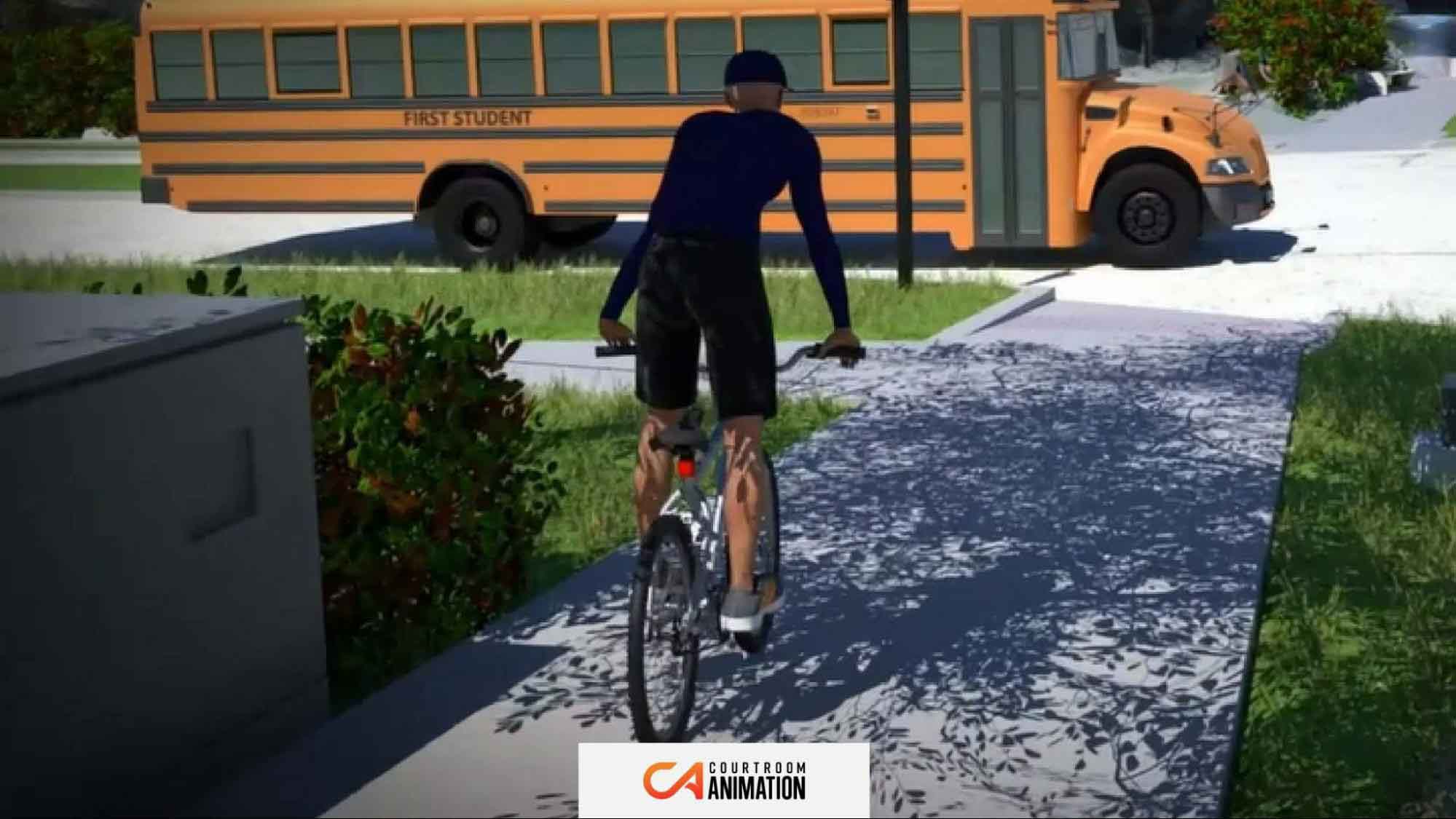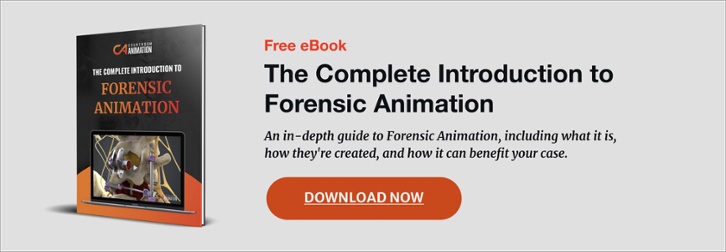
The legal industry has been slow to change, especially in terms of technology. The results of an ABA survey revealed that only 58% of firms used cloud-based data storage in 2020, an indication of the legal industry’s tendency of stagnation.
However, a rising trend of pro-technology has been in motion for several years. In a 2016 poll of 193 judges by the New York City Bar Association, Judges were asked “What is your view about displaying jury charges to jurors electronically? ” 69 judges who responded are already using technology in their courtrooms and many were willing to increase its role. The poll concluded that, “…the depth of a case’s presentation, and a judge’s ability to rule, become more effective, efficient, and thoughtful with such technology.”
This brings even more credit to the notion that, in this era of tech-savvy and visually inclined citizenry (thus, the average juror or judge), having a visual litigation aid is an invaluable component of any lawsuit.
That’s why it’s crucial to pair your real evidence with demonstratives, or some type of legal visual. Effectively used court visuals can lead to a massive ROI for attorneys who use them.
But what are the most impactful methods attorneys can leverage demonstratives with real evidence in mediation or in trial? To answer this question, we have curated three powerful and modern methods attorneys can use both real and demonstrative evidence.
1. Pair a Supportive Visual with Real Evidence in Mediation
During mediation, it’s common to have some form of real evidence to support your case, such as photographs or tangible objects related to the case. However, pairing a piece of real evidence with demonstrative evidence can increase the impact your argument has on the opposing party, and even with the mediator.

For example, imagine as a plaintiff attorney, your client was hit by a semi-truck driver and broke several bones. During mediation, you might have real evidence such as X-rays. But these alone might not be enough to show your client’s pain and suffering.
Those X-rays could be paired with a demonstrative evidence visual, such as an animated medical diagram, that labeled the injury, how long it would take to heal, or note the life-long implications of their injury.
“…Stories today are told with pictures, videos, and animations – a multimedia presentation. That multimedia presentation can make for a compelling and interesting story that captures the attention of important decision makers (e.g. claims adjusters and jurors) and results in pre-trial claim resolutions.”
– Matthew Stumpf, Attorney with Panish | Shea | Boyle | Ravipudi LLP
If you were a defense attorney on the same case, you could create an accident reconstruction that depicts how the accident was unavoidable, and your client is not at fault. This would help discredit their case, and help you reach a favorable settlement agreement.
The strategy of using both types of evidence makes your case infinitely more persuasive, especially if your case involves complex or technical data. Ultimately, you have a greater chance of reaching a favorable settlement or winning verdict. Plus, it proves you are prepared to go to trial!
In a recent accident reconstruction case, the demonstrative examples used by the plaintiff were so impactful they resulted in the defense increasing their settlement offer to one million dollars. An over 2,000% ROI on the animated visuals.
2. Create Memorable Opening & Closing Statements with Real Evidence & Demonstratives
The purpose of your opening statement is to, “prepare the minds of the jury to follow the evidence and to more readily discern its materiality, force and effect.” In short, your opening statement is the foundation upon which your case is built.
Your argument is the narrative, and your evidence contains the puzzle pieces that the jury is eager to put together. Creating a cohesive and impactful story is a key factor in winning your case – that’s why pairing real evidence with demonstratives right off the bat is vital.
Unsure how much demonstrative evidence would cost for your case? Download our free pricing guide to find out!
For example, in Hall v. Patzan, the defendant, collided their vehicle into the plaintiff’s vehicle, causing damages and severe injuries. The plaintiff’s counsel leveraged expert testimony and their witness testimony as real evidence. However, they also used several demonstrative exhibits to fortify their argument, including:
- Maps of the collision area
- Forensic animations to illustrate expert opinion including accident reconstructions
- Medical diagrams & models
- Timelines
- Photographs of the scene
- And more.
It is well established that courts have flexibility in allowing the use of demonstrative evidence to illustrate the testimony of witnesses in opening statements.
Tip: Trial demonstratives are also enormously impactful in closing arguments, when they can tie your case together and drive your facts home before the jury goes to deliberate.
3. Support Expert & Witness Testimony with Demonstrative Exhibits
Demonstrative evidence provides an extra perspective to testimonial evidence, especially expert testimony.
“Demonstrative exhibits often provide the cohesive context for the jury’s understanding of how the testimonial evidence and real evidence (e.g., tangible objects) relate to the themes presented at trial, and to the issues the jury decides. Persuasive and understandable demonstrative evidence, if presented properly at trial, will likely have a positive and lasting impact on the jury.”
– Hon. Donald J. O’Brien, Jr., Judge & Former Principal of O’Brien, Redding and Hyde Firm
What demonstrative evidence examples are the best for trial, and for supporting testimony? Blow-up charts, photos, and diagrams grab the attention of jurors. This mental connection promotes the retention and later recollection of your case’s real evidence.

One reason that visual aids enhance the weight of your case’s testimony is that it makes the witness more accessible to the jurors. Demonstratives provide a sense of connection between jurors and the witness or expert, which allows the jurors to view the testimony from the witness’s perspective faster.
Does your case need demonstrative exhibits? Read this article and find out.
Increase the Chances of a Favorable Verdict or Settlement with Real and Demonstrative Evidence
Relying solely on an oral presentation throughout litigation could put you at a disadvantage against your opposition. To bolster your expert or witness testimony, and the evidence of your case, consider leveraging demonstrative exhibits.
Judges, jurors, and attorneys across the nation expect some form of visual exhibit throughout the different phases of litigation. The next generation of tech-savvy and visually inclined attorneys has arrived. Using demonstrative evidence they are achieving incredible results in and out of the courtroom. The financial returns are undeniable and the storytelling potential is limitless.
Are you ready to join them?
Learn more about how your case can leverage visual litigation aids with real evidence in our free guide on demonstrative evidence.
Courtroom Animation has provided law animation services and realistic court exhibits in over 2,000 cases. Our experienced team and their efforts have resulted in over $1 Billion in Results and an outstanding 99% admissibility rate.
